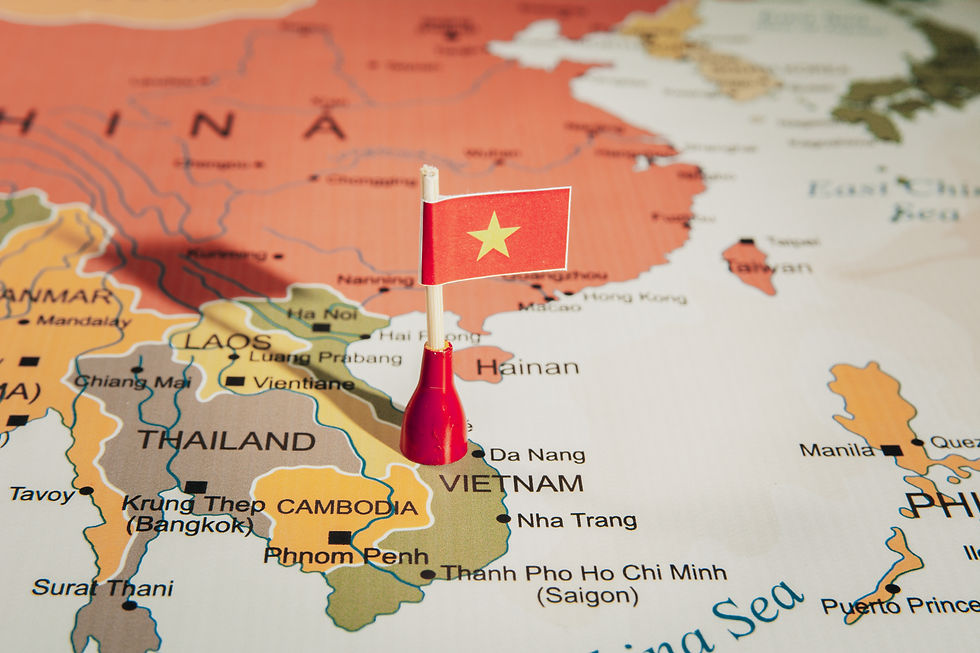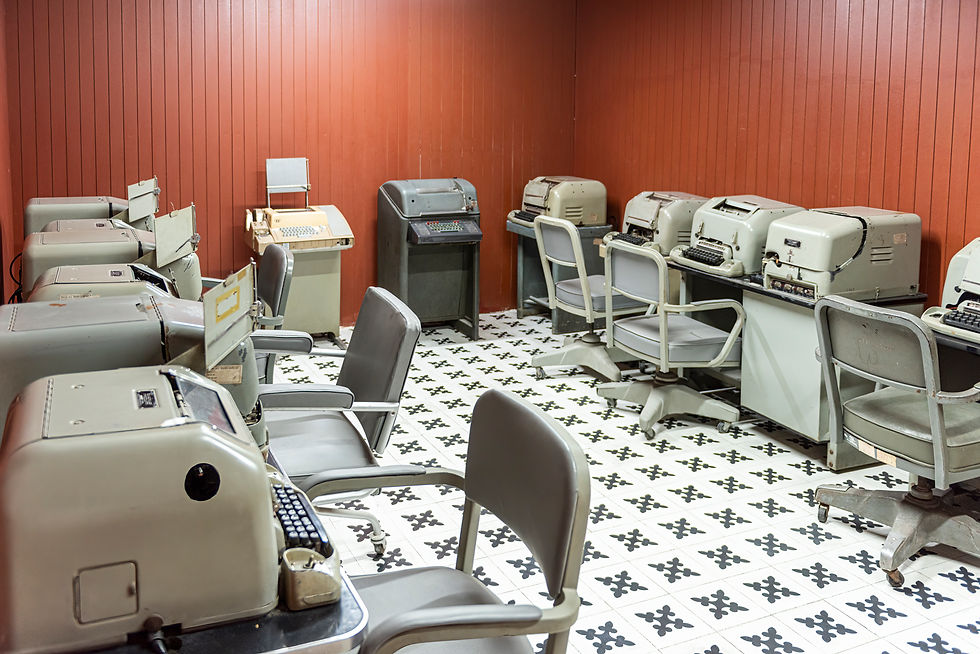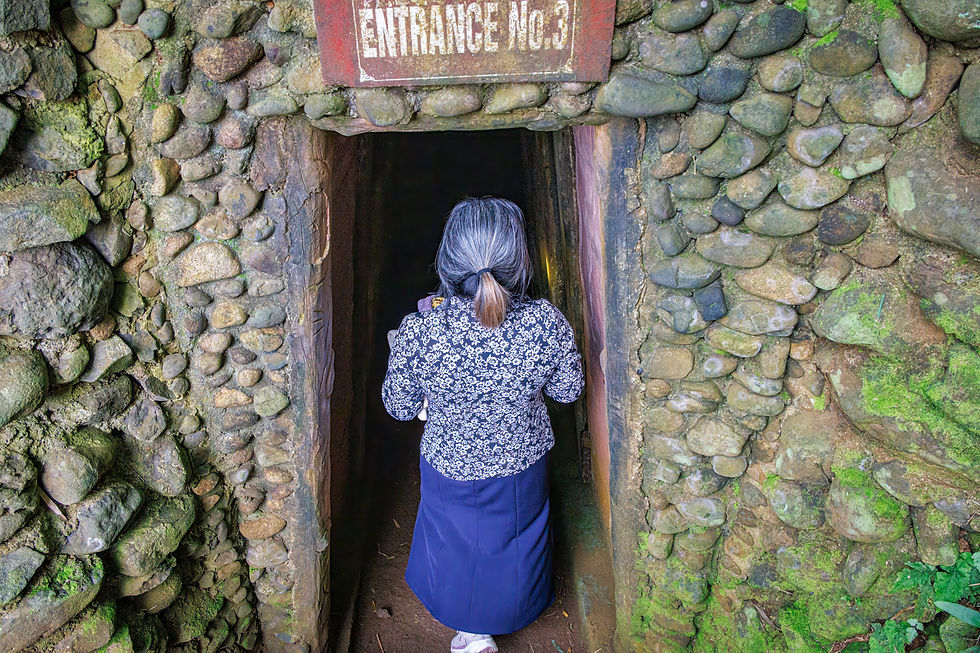Top War Museums in Vietnam You Need to Visit (For Travelers and History Enthusiasts)
- Marla Brown
- Sep 19
- 10 min read
Updated: Dec 5

Today, Vietnam is renowned for its stunning landscapes, rich cultural heritage, fast-moving economy, and delicious cuisine. However, to truly understand Vietnamese culture as a traveler, one must take time to explore its history.
Vietnamese culture is characterized by resilience, rooted in a long history of overcoming foreign invasions and natural disasters. Despite a past marked by war, periods of famine, and foreign domination, there is a strong sense of unity and optimism in Vietnam.
It has been 50 years since the conclusion of the Vietnam War, almost 70 years since the end of French colonial rule, and 80 years since Japan's occupation of Vietnam (not to mention over 1,000 years of Chinese domination). Vietnam's history of resisting colonialism and foreign powers, along with its struggle for independence and reunification, is chronicled in its museums and historical sites.
The war museums in Vietnam offer a unique glimpse into history, making them among the top destinations for travelers and history enthusiasts alike.
________________________________________
TABLE OF CONTENTS
___________________________________________
Here are some of the top-rated war museums in Vietnam that you should visit as a traveler or history buff.
Ho Chi Minh City (Saigon)
Ho Chi Minh City is the largest city in Vietnam and is often included on travelers' itineraries. If you are looking for a few museums to learn more about Vietnam's history, HCMC is a great place to start.
War Remnants Museum
Starting at the War Remnants Museum is always a good choice. The museum opened 50 years ago, right after the war ended in 1975. It contains a lot of information, and in 2024, the War Remnants Museum ranked #1 on the list of the top 10 museums to visit in Asia.

The museum hosts over 20,000 records, artifacts, and films. You can view decommissioned cannons, tanks, aircraft, and bombs at the museum. The Remnants Museum specializes in research, collection, preservation, and education about the consequences of unjust wars.
The museum's goal is to promote peace and foster unity among nations. As with any war museum, the exhibits can occasionally be challenging to comprehend and take in. However, visiting is worthwhile, and you'll leave with a significantly enhanced understanding of Vietnam's history.

Cu Chi Tunnels
Located approximately two hours from Ho Chi Minh City, the Cu Chi Tunnels are a well-known tourist destination. The Viet Minh initially constructed these tunnels in the 1940s to link villages during their struggle against the French.
During the Vietnam-American War, the North Vietnamese repaired and expanded the tunnel network to connect villages from the Saigon River to the Cambodian border. Since then, the Vietnamese government has preserved these tunnels and transformed them into a Memorial Park for visitors interested in learning more.

The history of the tunnels and the way the VC (North Vietnamese) maneuvered through this underground network is fascinating. The tunnels accommodated more than 16,000 people and featured living spaces, hospitals, classrooms, kitchens, and workshops spread over three levels. Entire villages were built beneath the surface.
The best way to explore the tunnels is by joining a local tour. Cu Chi Tunnel tours depart from Ho Chi Minh City daily. You can find small-group and private tours on GetYourGuide and Viator.
Travel tip: The key to selecting any tour is finding a trustworthy local travel guide. You need someone who can convey the true history of the war and make the tour engaging and informative. Tour guides can significantly impact the amount of knowledge and insight you gain from the experience.
Reunification Palace (Independence Palace)
During the Vietnam War, the Reunification Palace served as the headquarters for the President of South Vietnam, Nguyễn Văn Thiệu.

It’s also the landmark location that was televised all around the world on April 30, 1975, when the North Vietnamese tanks crashed through its gates, symbolizing the country’s reunification.
Currently, it serves as a museum accessible to visitors, provided there are no official receptions or meetings taking place.
The Vietnamese government has preserved this building to reflect its look from the 1960s and 1970s, encompassing its architecture, interiors, and underground bunkers. It feels like a journey back in time.
At the Reunification Palace, visitors can explore the well-preserved state rooms and the president's living quarters, view the rooftop helicopter pad, and gain insights into the command center used by the South Vietnamese military during the Vietnam War.

Central Vietnam
Central Vietnam played a vital role in the Vietnam War, with significant events such as the Tet Offensive in 1968 and the Battle of Hue. The ongoing battles in the coastal and central highland villages make this region an important place to study the Vietnam War.
Demilitarized Zone (DMZ)
Primarily known as the 17th Parallel, the Demilitarized Zone during the Vietnam War divided North Vietnam from South Vietnam. It was a heavily fought-over battlefield from 1954 until Vietnam’s reunification in 1976.

The 17th Parallel extends from the Laos border to the South China Sea, passing through Quang Tri Province, a place rich in war history.
You can see many of the region's landmarks in one day, including the 17th Parallel, Ben Hai River, Vinh Moc Tunnels, Hien Loung Bridge, Khe Sanh Combat Base, and the Ho Chi Minh Trail on a full-day tour.
When we traveled to this region, we were fortunate to be accompanied by a Vietnamese woman who had grown up there during the war. She provided us with a deeply personal, often heartbreaking account of life during the war.
The ideal way to explore this area is to hire a guide from Hue and dedicate a full day to the trip. Be sure to conduct thorough research before hiring your guide, as they make all the difference.
Vinh Moc Tunnels
The Vinh Moc Tunnels are situated approximately two hours north of Hue. From 1965 to 1972, the residents of Quang Tri Province were forced to find refuge from the American bombings to survive. With no other option to escape the war, they relocated their community underground.

The Vinh Moc Tunnels opened to the public as a museum in 1995, and over time, they have become a powerful reminder of the horrors of war.
Today, the craters from the bombings have been replaced with small villages, rice fields, and shrimp farms. Some areas have been reforested. However, the local Vietnamese people still share the memories and history of this region as a testament and reminder of the bravery, perseverance, and survival of its people during the Vietnam War.

I've included additional information about the Vinh Moc Tunnels in my post here.
Son My Memorial
As an American, this was one of the most challenging places to visit and a stark reminder of how horrific war can be. This is a memorial to the victims of the My Lai Massacre, which took place on March 16, 1968, in Son My, Vietnam.

Although it’s a small museum, the memorial and preserved village ruins do an admirable job of keeping the memory of this terrible day alive.
On the morning of March 16, 1968, American troops launched an attack on the village of Son My. A total of 504 unarmed men, women, and children were killed, subjected to sexual violence, and their homes were set ablaze.
Widely referred to as the My Lai Massacre, the memorial exhibits photographs, narratives, and artifacts from the village on that tragic day during the Vietnam War.

It’s hard to put into words what it felt like to walk back through the village where so many innocent people died from one of America’s most ghastly war crimes.
Even though my husband and I had learned about the My Lai Massacre through films and reading before our visit, nothing could have prepared us for actually walking through the village.

Our guide was in the area on March 16, 1968, and shared his own account of that day. My Lai was a complete tragedy. Tears and silence were all I could summon.
Several American soldiers who were present on that tragic day in 1968 have come back to honor the victims and find forgiveness. However, Lieutenant Calley, who led the massacre and was convicted in America before being released, never returned.

Khe Sanh Combat Base
The Khe Sanh Base was a United States Marine Corps outpost located south of the Vietnamese Demilitarized Zone in Quang Tri Province. It remains one of the most historically significant former American military sites in Vietnam today.

Located only 20 kilometers from the Laos border, the Khe Sanh Base was a critical east-west transportation artery to the coastline. The battle of Khe Sanh in 1968 is remembered not only for its scale and intensity but also for the perseverance of the soldiers involved on both sides.

Hanoi
Hanoi, located in Northern Vietnam, is home to several valuable historical museums that can further your study of Vietnam's history. Here are two sites in Hanoi that I would recommend.
Hoa Lo Prison
The American POWs nicknamed the Hoa Lo Prison the “Hanoi Hilton” during the Vietnam War. Today, it is a museum that preserves elements of its history, including both French and American lives.

It was built by the French in 1896 to instill fear in political prisoners resisting colonial rule. But during the Vietnam War, the prison was used by North Vietnam to hold American prisoners.
The museum features a preserved French guillotine, models of the prison population, and exhibits detailing the harsh conditions and brutality endured by the prisoners.

Vietnam Military History Museum
This museum is home to thousands of exhibits, photographs, maps, and scale models that span Vietnam's long and diverse history. It covers historical periods before 1930, to the uprising of 1975 during the Vietnam War.
The outdoor exhibits at the base of the Hanoi Flag Tower showcase airplanes, tanks, artillery, landmines, and other artifacts. A notable aspect of this area is the remains of aircraft downed by the Vietnamese army, including the tail of the American F-111A that crashed nose-down into the ground.

A Few More Sites
Phu Quoc Prison
Phu Quoc Island is a popular travel destination and has a haunting war history. If you want to go deeper into Vietnam's history, a visit to the Phu Quoc Prison is worth your time.
The prison is known locally as the “Coconut Tree Prison”. It was once a notorious prison used to imprison thousands of Vietnamese soldiers.
Originally set up by the French in the 1940s, it became the most significant prisoner of war camp in the country during the Vietnam War under the South Vietnamese government and the United States.
At its height, it housed more than 40,000 prisoners and is infamous for its harsh conditions, torture, forced labor, and inhumane treatment of inmates.

Con Dao Vietnam Museum & Prison
Con Dao Island is located off the tip of South Vietnam in the South China Sea. It has become a popular tourist destination and a place to discover more of Vietnam’s history.
There is a prison on the island that the French colonists used to suppress political dissidents. In addition to the prison, the Con Dao Museum, which opened in 2010, houses an extensive collection of historical artifacts and information.
Both are worth adding to your itinerary if you are looking for more historical information about Vietnam.

Some Final Thoughts
Over the years, as American visitors to Vietnam, my husband and I have not only received warm welcomes but have also encountered genuine enthusiasm. We now have Vietnamese friends whom we visit whenever we return to Vietnam.
There are numerous reasons to cling to anger after a war, yet the Vietnamese have transformed loss and adversity into fresh starts, prosperity, and development. While most war victims will never forget, many have chosen to advance and move on.
As time has passed, numerous American soldiers have returned to Vietnam to confront their war memories. Many local Vietnamese guides we have previously worked with have taken American veterans to the sites of their former battles.
One notable veteran was Senator John McCain. Senator McCain returned to Vietnam and the Hoa Lo Prison many times after his release in 1973.
In April 2000, he returned to Vietnam to share how the two countries could reconcile and begin a new relationship.
Today, a memorial is located on the shores of Ho Truc Bach Lake in Hanoi, marking the site where his plane crashed, and the Vietnamese captured him. This monument reflects the intricate legacy of the Vietnam War. It stands as a symbol of reconciliation between the U.S. and Vietnam, honoring John McCain's journey from prisoner of war to emblem of peace.

Vietnamese war museums and memorials have safeguarded vital elements of their history to remind future generations and visitors to their country of the path taken to achieve their freedom.
As travelers, we believe that gaining insight into a country's history provides us with a broader perspective and a more open mind. Never stop learning.
As always, wherever your journey takes you, I wish you safe travels.
Marla
“Travel isn’t always pretty. It isn’t always comfortable. Sometimes it hurts, it even breaks your heart. But that’s okay. The journey changes you; it should change you. It leaves marks on your memory, on your consciousness, on your heart, and on your body. You take something with you. Hopefully, you leave something good behind.” Anthony Bourdain






Comments